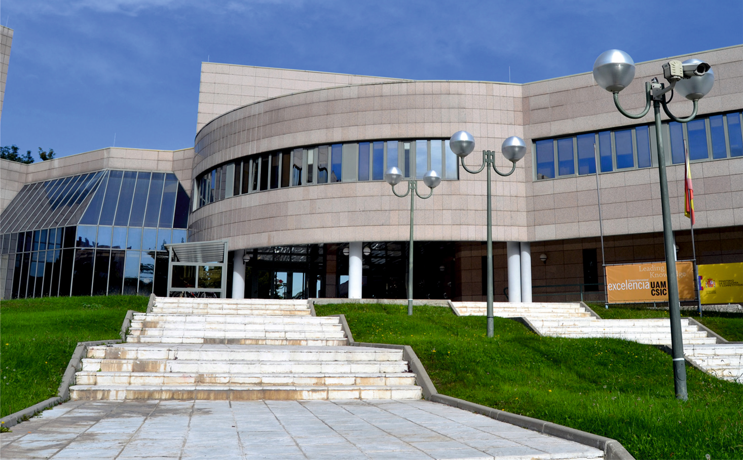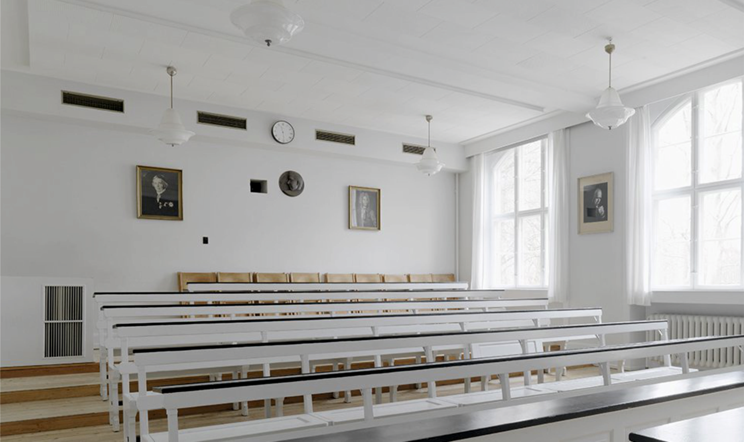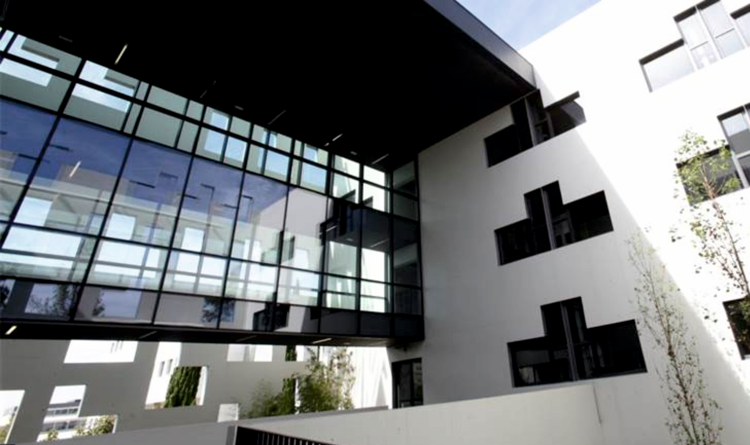Page Not Found
Page not found. Your pixels are in another canvas.
A list of all the posts and pages found on the site. For you robots out there is an XML version available for digesting as well.
Page not found. Your pixels are in another canvas.
About me
This is a page not in th emain menu
Published:
This post will show up by default. To disable scheduling of future posts, edit config.yml and set future: false.
Published:
This is a sample blog post. Lorem ipsum I can’t remember the rest of lorem ipsum and don’t have an internet connection right now. Testing testing testing this blog post. Blog posts are cool.
Published:
This is a sample blog post. Lorem ipsum I can’t remember the rest of lorem ipsum and don’t have an internet connection right now. Testing testing testing this blog post. Blog posts are cool.
Published:
This is a sample blog post. Lorem ipsum I can’t remember the rest of lorem ipsum and don’t have an internet connection right now. Testing testing testing this blog post. Blog posts are cool.
Published:
This is a sample blog post. Lorem ipsum I can’t remember the rest of lorem ipsum and don’t have an internet connection right now. Testing testing testing this blog post. Blog posts are cool.
Published in Physical review letters 99, 233902, 2007
In this publication, we demonstrate Mie resonance-mediated light transport in randomly arranged monodisperse dielectric spheres packed at high filling fractions. By means of both static and dynamic optical experiments, we show resonant behavior in the key transport parameters and, in particular, we find that the energy transport rate, which is less than the group velocity, also shows resonant behavior.
Published in Advanced Materials 19, 2597, 2007
In this publication, the realization of photonic glasses, a new photonic material consisting of a solid random distribution of monodisperse spheres, is presented. in particular, two types of ways of obtaining this material are described in detail. The first, based on colloidal charge interaction, provides very thick and completely random samples that can also be used as templates to grow materials with a higher refractive index, such as ZnO or Si. These samples can be a perfect playground for investigating light propagation in resonant random media, random laser, and Anderson localization. The second method, based on binary colloidal suspension and selective etching, provides disordered thin films made by vertical deposition. This method can also be used for controlled vacancy doping colloidal photonic crystals, which can be a perfect model for the investigation of the role of disordered periodic photon lattices.
Published in Nature Photonics 2, 429, 2008
A stochastic laser is a system made up of a random set of elastic scatterers dispersed in an optical gain medium. Multiple light scattering replaces the standard optical cavity of traditional lasers, and the interaction between gain and scattering determines the properties of the laser. All random lasers studied up to the date of this publication consisted of irregularly shaped or polydisperse scatterers, with a certain average scattering force that was constant over the laser frequency window. In this publication we consider the case where the dispersion is resonant. We show that randomly assembled monodisperse spheres can sustain scattering resonances over the gain frequency window and that therefore the laser wavelength can be controlled by the diameter and refractive index of the spheres. Therefore, the system is a stochastic laser with a laser peak designed a priori within the gain curve.
Published in Science 327, 1352 , 2010
An important challenge in quantum optics and quantum information technology is to improve the interaction between single photons and single quantum emitters. This requires highly engineered optical cavities that are inherently sensitive to manufacturing imperfections. In this post, we demonstrate a fundamentally different approach where clutter is used as a resource rather than a nuisance. We generate tightly confined Anderson-localized cavity modes by deliberately adding disorder to photonic crystal waveguides. The emission rate of a waveguide-embedded semiconductor quantum dot was enhanced by a factor of 15 at resonance with the localized Anderson mode, and 94% of the emitted single photons were coupled to the mode. Thus, disordered photonic media provide an efficient platform for quantum electrodynamics, offering an approach for intrinsically disorder-resistant quantum information devices.
Published in Physical Review A 84, 023813, 2011
Photonic crystals are extremely sensitive to structural disorder to the point of completely losing their functionalities. While on the one hand this may be detrimental to applications in traditional optical devices, on the other hand it also leads to some very interesting new physics and maybe even new applications. In this publication, we propose a route to introduce disorder in photonic crystals in a controlled way by creating a certain percentage of vacancies in the crystal lattice. We show how the method works and what kind of materials can be obtained in this way. In addition, we use this system to test the role of disorder in the resulting transport properties from various viewpoints, including measurements of the transport and scattering mean free path and the diffusion constant.
Published in Applied Physics Letters 102, 031101, 2013
This publication develops a simple and practical method to assess the degree of imperfection in nanostructures due to the manufacturing process. In science in general and in nanotechnology in particular, the degree of precision required is crucial since any deviation from the initial design can damage and hinder the functionality for which the device has been designed. Quantifying these imperfections is not an easy task since they are minimal due to the great development of current manufacturing techniques. Residual clutter due to manufacturing imperfections has a major impact in nanophotonics, where it can degrade device performance by increasing radiation loss or spontaneously trapping light via Anderson localization. In this publication, we propose and experimentally demonstrate a method to quantify the intrinsic amount of disorder in state-of-the-art photonic crystal waveguides from far-field measurements of localized Anderson modes. This is achieved by comparing the spectral range where the Anderson localization is observed with numerical simulations, and the method offers sensitivity down to 1 nanometer.
Published in Nature Nanotechnology 9, 285, 2014
The development of nanoscale optical devices for classical and quantum photonic applications is inevitably plagued by manufacturing imperfections that often impose performance limitations. However, disorder can also enable new functionality, for example in stochastic lasers, where the laser is based on random multiple scattering of light. The applicability of stochastic lasers has been limited due to multidirectional emission, lack of tuning capabilities, and strong competition from chaotic fluctuating lasing modes due to weak mode confinement. In this publication, the Anderson localization regime of light has been explored to obtain stable multimode stochastic lasers. Here, we demonstrate on-chip random nanolasers where intrinsic disorder provides the feedback of the cavity. The strong confinement achieved by Anderson localization reduces the spatial overlap between laser modes, thus avoiding competition between modes and increasing their stability. This allows the laser to be highly efficient and stable and with very small mode volumes.
Published in Annalen Der Physik 529, 1600351, 2017
Nanophotonics focuses on the control of light and the interaction with matter by the aid of intricate nanostructures. Typically, a photonic nanostructure is carefully designed for a specific application and any imperfections may reduce its performance, i.e., a thorough investigation of the role of unavoidable fabrication imperfections is essential for any application. However, another approach to nanophotonic applications exists where fabrication disorder is used to induce functionalities by enhancing light-matter interaction. Disorder leads to multiple scattering of light, which is the realm of statistical optics where light propagation requires a statistical description. We review here the recent progress on disordered photonic nanostructures and the potential implications for quantum photonics devices.
Published in Physical Review B 98, 6, 2018
All-optical modulation of light relies on exploiting intrinsic material nonlinearities [V. R. Almeida et al., Nature 431, 1081 (2004)]. However, this optical control is rather challenging due to the weak dependence of the refractive index and absorption coefficients on the concentration of free carriers in standard semiconductors [R. A. Soref and B. R. Bennett, Proc. SPIE 704, 32 (1987)]. To overcome this limitation, resonant structures with high spatial and spectral confinement are carefully designed to enhance the stored electromagnetic energy, thereby requiring lower excitation power to achieve significant nonlinear effects [K. Nozaki et al., Nat. Photonics 4, 477 (2010)]. Small mode-volume and high-quality (Q)-factor cavities also offer an efficient coherent control of the light field and the targeted optical properties. Here, we report on optical resonances reaching Q ∼ 105 induced by disorder on photonic/phononic-crystal waveguides. At relatively low excitation powers (below 1 mW), these cavities exhibit nonlinear effects leading to periodic (up to ∼35 MHz) oscillations of their resonant wavelength. Our system represents a test bed to study the interplay between structural complexity and material nonlinearities and their impact on localization phenomena and introduces a different functionality to the toolset of disordered photonics.
Published in Physical Review Letters 122, 2019
Fundamental observations in physics ranging from gravitational wave detection to laser cooling of a nanomechanical oscillator into its quantum ground state rely on the interaction between the optical and the mechanical degrees of freedom. A key parameter to engineer this interaction is the spatial overlap between the two fields, optimized in carefully designed resonators on a case-by-case basis. Disorder is an alternative strategy to confine light and sound at the nanoscale. However, it lacks an a priori mechanism guaranteeing a high degree of colocalization due to the inherently complex nature of the underlying interference processes. Here, we propose a way to address this challenge by using GaAs/AlAs vertical distributed Bragg reflectors with embedded geometrical disorder. Because of a remarkable coincidence in the physical parameters governing light and motion propagation in these two materials, the equations for both longitudinal acoustic waves and normal-incidence light become practically equivalent for excitations of the same wavelength. This guarantees spatial overlap between the electromagnetic and displacement fields of specific photon-phonon pairs, leading to strong light-matter interaction. In particular, a statistical enhancement in the vacuum optomechanical coupling rate, go, is found, making this system a promising candidate to explore Anderson localization of high frequency (∼20 GHz) phonons enabled by cavity optomechanics. The colocalization effect shown here unlocks the access to unexplored localization phenomena and the engineering of light-matter interactions mediated by Anderson-localized states.
Published in Small 15, 1905290, 2019
The regulation of temperature is a major energy-consuming process of humankind. Today, around 15% of the global-energy consumption is dedicated to refrigeration and this figure is predicted to triple by 2050, thus linking global warming and cooling needs in a worrying negative feedbackloop. Here, an inexpensive solution is proposed to this challenge based on a single layer of silica microspheres self-assembled on a soda-lime glass. This 2D crystal acts as a visibly translucent thermal-blackbody for above-ambient radiative cooling and can be used to improve the thermal performance of devices that undergo critical heating during operation. The temperature of a slicon wafer is found to be 14 K lower during daytime when covered with the thermal emitter, reaching an average temperature difference of 19 K when the structure is backed with a silver layer. In comparison, the soda-lime glass reference used in the measurements lowers the temperature of the silicon by just 5 K. The cooling power of this simple radiative cooler under direct sunlight is found to be 350 W m−2 when applied to hot surfaces with relative temperatures of 50 K above the ambient. This is crucial to radiatively cool down devices, i.e., solar cells, where an increase in temperature has drastic effects on performance.
Published in Physical Review Letters 126 (2), 027403, 2021
The backscattering mean free path ξ, the average ballistic propagation length along a waveguide, quantifies the resistance of slow light against unwanted imperfections in the critical dimensions of the nanostructure. This figure of merit determines the crossover between acceptable slow-light transmission affected by minimal scattering losses and a strong backscattering-induced destructive interference when the waveguide length L exceeds ξ. Here, we calculate the backscattering mean free path for a topological photonic waveguide for a specific and determined amount of disorder and, equally relevant, for a fixed value of the group index ng which is the slowdown factor of the group velocity with respect to the speed of light in vacuum. These two figures of merit, ξ and ng, should be taken into account when quantifying the robustness of topological and conventional (nontopological) slow-light transport at the nanoscale. Otherwise, any claim on a better performance of topological guided light over a conventional one is not justified.
Published in Nature Nanotechnology 17, 947, 2022
Controlling vibrations in solids is crucial to tailor their elastic properties and interaction with light. Thermal vibrations represent a source of noise and dephasing for many physical processes at the quantum level. One strategy to avoid these vibrations is to structure a solid such that it possesses a phononic stop band, that is, a frequency range over which there are no available elastic waves. Here we demonstrate the complete absence of thermal vibrations in a nanostructured silicon membrane at room temperature over a broad spectral window, with a 5.3-GHz-wide bandgap centred at 8.4 GHz. By constructing a line-defect waveguide, we directly measure gigahertz guided modes without any external excitation using Brillouin light scattering spectroscopy. Our experimental results show that the shamrock crystal geometry can be used as an efficient platform for phonon manipulation with possible applications in optomechanics and signal processing transduction.
Published in Physical Review Letters 130, 043802, 2023
Confining photons in cavities enhances the interaction between light and matter. In cavity optomechanics, this enables a wealth of phenomena ranging from optomechanically induced transparency to macroscopic objects cooled to their motional ground state. Previous work in cavity optomechanics employed devices here ubiquitous structural disorder played no role beyond perturbing resonance frequencies and quality factors. More generally, the interplay between disorder, which must be described by statistical physics, and optomechanical effects has thus far been unexplored. Here, we demonstrate how sidewall roughness in air-slot photonic-crystal waveguides can induce sufficiently strong backscattering of slot-guided light to create Anderson-localized modes with quality factors as high as half a million and mode volumes estimated to be below the diffraction limit. We observe how the interaction between these disorder-induced optical modes and in-plane mechanical modes of the slotted membrane is governed by a distribution of coupling rates, which can exceed optomehcanical couplings up to 200 KHz, leading to mechanical amplification up to self sustained oscillations via optomechanical backaction. Our Letter constitutes the first steps towards understanding optomechanics in the multiple-scattering regime and opens new perspectives for exploring complex systems with a multitude of mutually coupled degrees of freedom.
Published:
This is a description of your talk, which is a markdown files that can be all markdown-ified like any other post. Yay markdown!
Published:
This is a description of your conference proceedings talk, note the different field in type. You can put anything in this field.
We are looking for an experienced researcher on experimental thermal management, radiative cooling, heat transfer and/or photonics. Experience on radiative-cooling measurements is a major plus. Experience on photonics and general optics is also good starting point. Experience on numerical electromagnetic modelling tools and/or python/matlab programing to compute photonic properties of nanostructures are also valuable. Maybe most important than anything: passionate and enthusiastic candidates are strongly encouraged to apply to this research position.
PhD student, CSIC, 2005

pre-doctoral reseracher internship, LENS, 2007

postdoctoral reseracher, Department of Photonics Engineering, 2009

Assistant Professor, University of Copenhagen, 2012

Ramón & Cajal Researcher, CSIC, 2015
